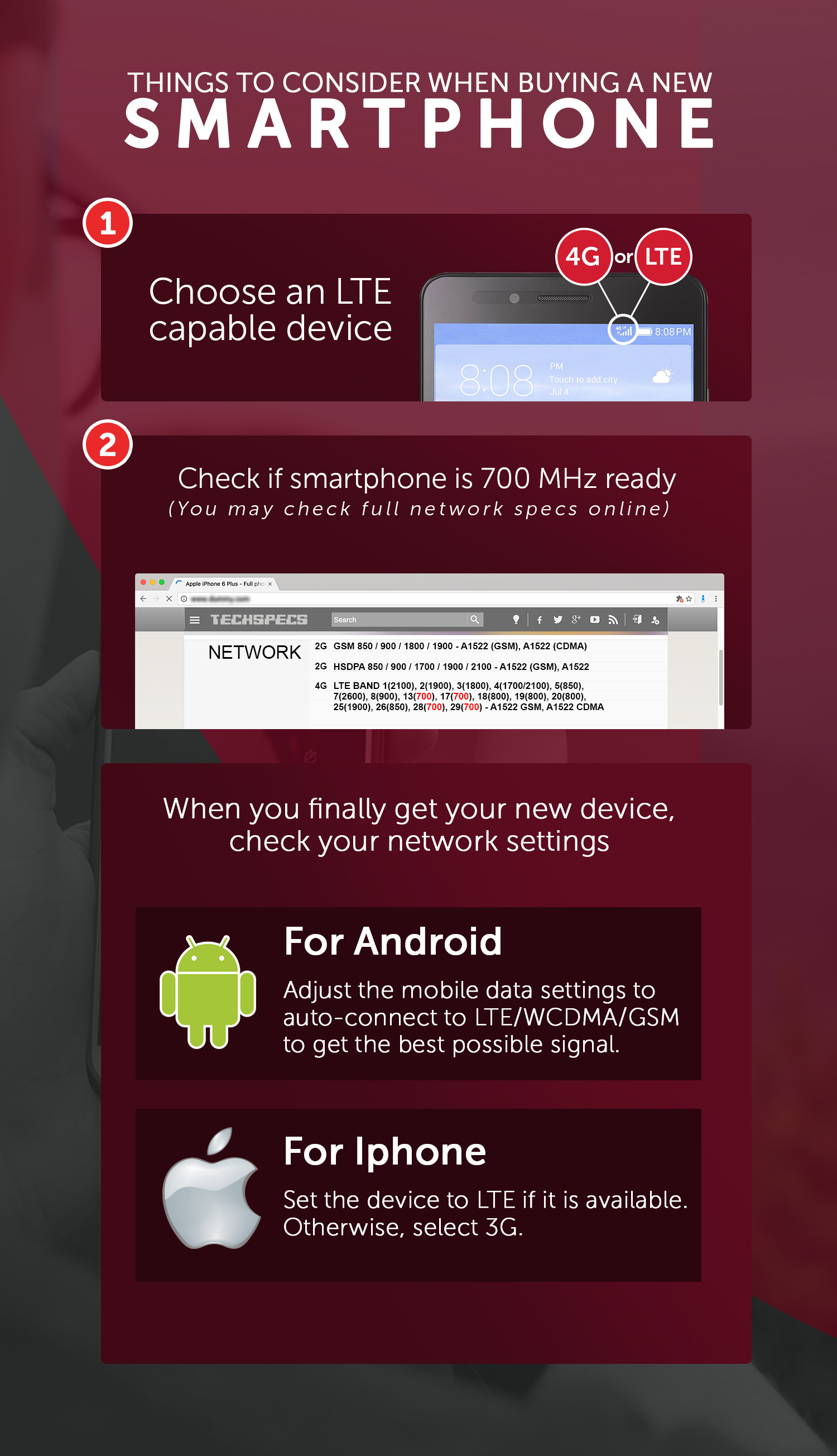
Planning on getting a new smartphone? Here are some tips to get you future-ready.

Long-term Evolution (LTE) or 4G has been in the Philippines since Smart Communications first launched it in 2011. As years went by, we saw new technologies, new devices, and new services that made LTE more and more useful and relevant.
We are surfing via mobile almost 24/7. We are watching more videos, listening to more music, playing more games. We're consuming more content and performing more online transactions. Indeed we are now living in a connected society.
When investing in new technology, it is important for your choice of device or service to be future-proof. To be ready and to better experience the fully-connected future, here are some tips to get you started:
When upgrading to a new phone, choose a device that's LTE capable
Local telcos have been rolling out additional LTE cellsites in key locations across the country. Smart Communications in particular is projecting that before the year 2018 ends, 95% of the Philippines' cities and municipalities are already covered with Smart LTE.
Why go LTE? LTE is currently the most advanced commercial mobile network available. It offers mobile surfing and connectivity experience that is so much better compared to 3G.
With the exciting and promising future of a fully connected world - with mobile data networks connecting not just smartphones but also smart devices for household, transportation, enterprises, healthcare, entertainment, and more - it is just logical to shift to LTE today. It is LTE that is going to catapult us into the even more hyperconnected world of 5G, which is expected to be commercially available in the Philippines in 2020.
To maximize the LTE network, go for devices that are 700MHz-ready
Smart is now utilizing the 700MHz cellular frequencies to fire up LTE signals in more places across the country like Metro Davao (completed last year), Metro Cebu and Metro Manila (ongoing).
If you recall, Smart has just gained access to the 700MHz frequencies last year, and it was considered a gamechanger since low-frequency bands like 700Mhz (and 850 MHz which Smart also utilizes), tend to be more efficient in beaming LTE signal to a wider area. Moreover, these frequencies are also much powerful that network signal can easily penetrate obstructions making indoor network coverage much stronger for mobile users.
This means, a single 700MHz base station can serve a much wider area within a much larger radius, and mobile users can now experience LTE signal through their smartphones even while indoors (residences, workplaces, schools, establishments).
Make sure you're using the right settings
The best LTE signal experience is the result of the combination of a powerful service, the right location, the right device and the right settings.
For your LTE-capable devices, it is best to set your smartphone to auto-connect, with LTE as the preferred signal. This will allow your device to lock in to the best signal available in your areas.
If you are using an Android device, adjust the mobile data settings to auto-connect to LTE/WCDMA/GSM to get the best possible signal. If you are using an iPhone, set the device to LTE if it is available. Otherwise, select 3G.

